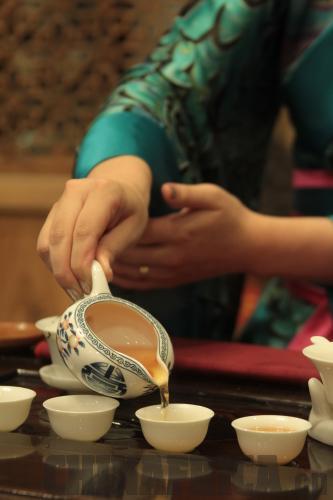|
 |
|
WANG XIANG |
Teahouses in China can be traced back to the Tang Dynasty (618-907). Accompanying flourishing commerce and economy, teahouses were widely found in both urban and rural areas. Due to their many geographical locations and long history, they vary in style across the country.
Cameroonian crosstalk performer Francis Tchiegue has been in China for seven years, and speaks Chinese fluently. When touring through Chinese cities, he loves to visit local teahouses to learn about an area's culture. He integrates these experiences into his crosstalk performances.
Different tea cultures
In Chengdu, a city in the southwestern province of Sichuan, people sitting in teahouses are a common sight. Leisurely, they drink tea, chat or play mahjong (a Chinese game with four players using tiles). Spending a whole day in a teahouse can cost less than 20 yuan ($3.03).
On the eastern end of the country, in Guangzhou, drinking tea is a ritual. The morning greeting there is "Have you had tea?" It's common to see families gathering at teahouse to chat, drink, and eat dim sum. Because of its affordable price, drinking tea in teahouses is an integral part of daily life.
Kungfu tea culture is relatively famous in southeastern coastal areas like Guangdong and Fujian provinces. Particularly in the Chaozhou-Shantou area, every household has a kungfu tea set and locals drink tea several times a day.
Similarly, Beijing's teahouses have characteristics unique to the capital, combining the local tea culture with folk customs. For centuries, they served as places for people to watch performances and have chats. They were centers for talkative and lively people, and the art of tea was less important. Today's teahouses are endowed with new functions: they both preserve culture and host business affairs.
|